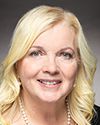Thank you, Mr. Chair, for the question. That is a very good one.
We are using the cloud as a commercial solution. Catherine mentioned the name “hyperscaler”, which offers cloud. When they have been certified and we have approved utilization, they are integrated into our network. The traffic—whether it's a service, program or application in the cloud or running into a data centre—still comes to our network. The monitoring tools that a cybersecurity centre provides, and the enhanced monitoring we have on the Government of Canada networks, still apply to what we call the “workload”—let's call it the “applications”—that runs in the cloud, in the same way it would in the enterprise data centre.
It's why the security requirements, or the assessment done before we approve a hyperscaler to provide these services.... The validation of the guardrails or security control is so important, because it's one more option we have for hosting applications. Catherine explained really well the agility that comes with the cloud, but we have to do it in a safe way. We cannot lose the level of security we have built around the traditional [Inaudible—Editor] just because we are using a new [Inaudible—Editor]. We find a way to integrate that. We are never done with this. The guardrails we have today will continue to evolve and be perfected over time.
However, I think what the Auditor General reminded us about.... Did you know, now, that 200 instances of the cloud are organized and configured in line with these guardrails? Frankly, this raised the alert for us. We put the team on checking this. I was very glad to receive a report, last spring, that we were in a good place, in terms of compliance. The few departments that had challenges were notified and, with the support of the CGCIO, we got them to address it. However, this is an ongoing watch. We always have to make sure nothing is being changed and that the level of security remains there.
It's why automation is important. Human intervention in five instances is one thing. When we are at 200, 400 or 500, it will become almost impossible to have our eyes on everything, all the time. Automation is the way for us to get an alert if a guardrail is being changed by a department user. When I talk about the department, there is a small number of people who can change these. For various reasons, someone may decide to—or by mistake—change one of the configuration elements. We need to be alerted, so we can address that in a timely manner.
This is no different from when we were running data centres, before. It's just a different way to apply these guardrails.




